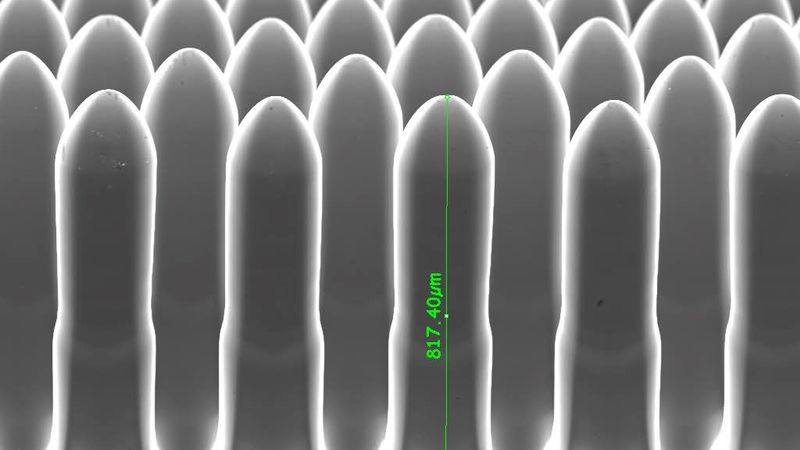Altering material properties: how far can you go with Electroforming?
Where one engineer may require a surface that is as reflective as a mirror, another may want a product that absorbs as much light as possible. How do you achieve both material properties?
Material properties matter to engineers. Where one engineer may require a surface that is as reflective as a mirror, another may want a product that absorbs as much light as possible. Similarly, engineer A may need a product that is as stiff and hard as possible, while engineer B requires a much softer product with a low elastic modulus. An obvious guess would be that all these engineers need a different material for their products. After all, aren’t the properties of a product determined by the material you choose?
The answer is no! If this logic were true, our world would look completely different. Both graphite and diamonds consist of carbon, but everyone knows properties diverge in the extremest sense. Knowing only the material of a certain product is hardly ever enough to understand how it will perform. The reason is that material’s properties are determined by the atomic structure of that material.
As an engineer, you can actually create different kinds of properties for the same kind of material.
Two examples of material properties alteration
Example one: you can create a component that’s virtually non-magnetic, even though it’s made of a material that usually has magnetic properties. Such alteration can be achieved by manipulating the crystal structure of your material. By changing the deposition conditions, you can, for instance, obtain nickel deposits that are nearly amorphous. Such nanocrystalline material is usually very smooth and hardly ferromagnetic.
There are plenty of companies using equipment that operate in high-frequency ranges. Any magnetizable components within that equipment may interfere with such signals, rendering the equipment useless. The additive character of Electroforming allows you to control the properties of your products as you grow them.
In this particular case, you can alter your settings such that growth is suppressed and nucleation is promoted, resulting in nanocrystalline nickel deposits. These deposits are far less magnetizable than hot-rolled nickel products, for instance. So by controlling the material’s structure, the component’s magnetic properties become almost nonexistent. At least to the point where it doesn’t cause interference during the usage of the equipment.
Example number two: you can also manipulate the hardness of a by manipulating its crystal structure. A material that contains crystals of only a few nanometers in size will turn out hard. As the size of the crystals increase, so will the softness of the material. This flexibility allows you to tailor the hardness of materials to your needs.
As you can tell by now, it’s important to stop thinking in materials and start thinking in properties. But there are always limits and restrictions, though. Luckily, there are also solutions for cases when you require material properties that cannot be achieved by altering the structure. That solution is coating.
Coatings — when altering your material’s properties doesn’t suffice
What if you require a component that is very resistant to corrosive environments? Or what if you’re fabricating a nickel product that shouldn’t be in constant contact with human skin? That’s where coatings come in.
In these examples, you can add a layer of palladium or gold to avoid direct exposure to human skin. This same solution applies to ink-jetting, where the released chemicals would cause the nickel plates to deteriorate.
Another illustrative example is a sugar sieve (or screen). Sugar screens are used to rapidly remove molasses from sugar crystals under centrifugal force. But that centrifugal force also causes sugar crystals to collide with the screens at high velocity. Soft-Nickel wouldn’t stand a chance against that kind of impact — but a chrome coating does.
How to alter material properties or apply coatings to materials
An efficient technique to alter material properties or apply coatings to materials is Electroforming. Electroforming is an additive manufacturing process that forms high-precision metal parts through precise electrodeposition. Here’s a video illustrating the Electroforming process:
The uniqueness of Electroforming is that you can grow metal parts atom by atom, providing accurate and high aspect ratios. An electrolytic bath is used to deposit a metal (nickel, gold, copper) onto a conductive patterned surface: the coating process. You can also use Electroforming to alter material properties effectively.
If you would like to learn more about Electroforming — and how high-precision metal parts will help you grow your business — you can download our whitepaper here
